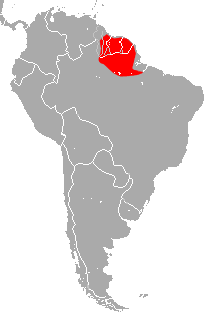| Amazonian sac-winged bat | |
|---|---|
| Scientific classification | |
| Kingdom: | Animalia |
| Phylum: | Chordata |
| Class: | Mammalia |
| Order: | Chiroptera |
| Family: | Emballonuridae |
| Genus: | Saccopteryx |
| Species: | S. gymnura |
| Binomial name | |
| Saccopteryx gymnura | |
 | |
| Amazonian sac-winged bat range | |
The Amazonian sac-winged bat (Saccopteryx gymnura) is a species of bat in the family Emballonuridae. [3] It is native to South America. [1]
